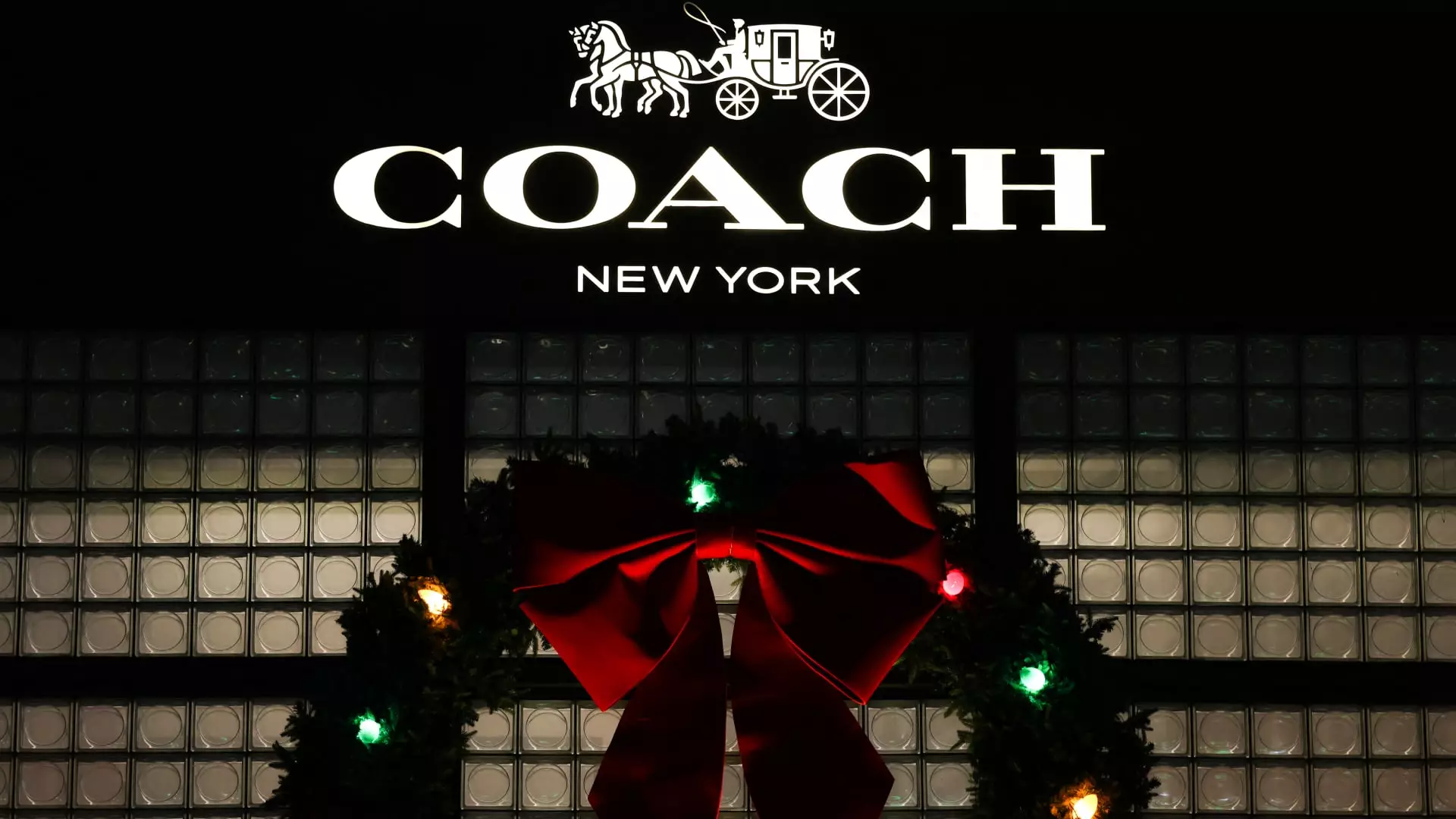Tapestry Inc., the parent company behind luxury brands such as Coach, Kate Spade, and Stuart Weitzman, experienced a substantial stock increase of approximately 12% this past Thursday. This surge was prompted by the company’s announcement that it exceeded sales projections for the holiday quarter, along with an upward revision of its full-year revenue forecast. Tapestry is now anticipating annual revenue exceeding $6.85 billion, indicating a projected increase of around 3% compared to the previous year. Furthermore, the company’s expectations for earnings per share have been adjusted upwards to a range between $4.85 and $4.90, compared to prior projections of $4.50 and $4.55.
The financial boost comes shortly after Tapestry scrapped its merger plans with Capri Holdings, a decision made less than two months prior. Initially, the merger was intended to consolidate two major luxury brands into a single powerhouse, creating a portfolio that included Tapestry’s trio of labels alongside Capri’s prestigious brands, including Versace and Michael Kors. However, as Tapestry experiences growth, Capri’s struggles are equally notable, with the latter reporting a significant drop in sales for its key brands during the same holiday period.
The disparity between Tapestry’s success and Capri’s setbacks was stark. Capri’s holiday sales figures indicated a downturn, particularly with double-digit declines for both Versace and Michael Kors. John Idol, CEO of Capri, acknowledged that the company had made critical miscalculations in its strategic approach, particularly in reducing lower-priced accessory lines that once drew a broader consumer base.
This begs the question: What differentiates Tapestry from its competitors? Joanne Crevoiserat, Tapestry’s CEO, attributes the company’s success to a blend of innovation, relevance, and perceived value. In her own words, Tapestry’s brand-building strategies remain robust in engaging consumers, regardless of fluctuating economic conditions. By understanding consumer preferences and tailoring their offerings accordingly, Tapestry has positioned itself as a resilient force within the luxury retail landscape.
In the fiscal quarter ending December 28, Tapestry reported adjusted earnings per share of $2.00, surpassing analysts’ expectations of $1.75. Similarly, the company’s revenue reached $2.20 billion, exceeding projections of $2.11 billion. Notably, Coach emerged as the standout performer within Tapestry’s portfolio, boasting an impressive revenue increase of 11% year-over-year. In contrast, both Kate Spade and Stuart Weitzman reported declines in revenue of 10% and 15% respectively, highlighting the challenges faced by these brands in appealing to consumers.
Tapestry’s CFO Scott Roe underscored that the company’s future guidance accommodates potential challenges, such as a looming 10% tariff on goods imported from China, slated to take effect shortly. Nonetheless, given that less than 10% of Tapestry’s sourcing derives from China, the predicted impact on overall performance is expected to be minimal. The company appears well-positioned to navigate these headwinds by consolidating its primary sources of manufacturing outside of China.
Looking ahead, Tapestry is adopting a more calculated stance regarding mergers and acquisitions. Crevoiserat emphasized the need for Coach to maintain growth while simultaneously striving for a resurgence in Kate Spade’s market availability. The company has set forth plans to focus on its most sought-after styles and further invest in Kate Spade’s turnaround strategy, particularly in underpenetrated markets like Europe and China.
North America remains Tapestry’s dominant market, accounting for nearly 70% of holiday quarter sales. However, Europe has exhibited impressive growth, with revenue surging by 45% year-over-year. The boost in sales in Europe recommends a significant opportunity for Tapestry to expand its footprint further, especially as it continues to attract younger consumers. The company successfully gained around 2.7 million new customers in North America during the quarter, with over half belonging to the coveted Gen Z and millennial demographics.
A crucial element of Tapestry’s strategy is the revitalization of the Kate Spade brand. Recently, Eva Erdmann, former president of L’Oréal’s Urban Decay Cosmetics line, stepped in as the new CEO of Kate Spade, marking a significant movement towards refreshing the brand’s market presence. During the earnings call, Crevoiserat indicated that the company would reduce the number of handbags offered under the Kate Spade label by over 15%, demonstrating a commitment to focusing on cohesive and appealing product offerings rather than overwhelming consumers with choices.
Key to this strategy is the prioritization of quality over discount-driven sales, a move that aligns with Tapestry’s overarching vision of strengthening its brands while emergent consumer dieting trends become more prominent. Consumer sentiment suggests a growing preference for quality and substance over quantity and price reductions — a trend that Tapestry clearly hopes to capitalize on in the coming years.
Tapestry’s latest financial performance underscores its innovative spirit, resilience, and adaptability in a turbulent consumer market. As it engages with its diverse customer base and refines its brand portfolio, the company appears poised for continued growth while fostering consumer loyalty amidst competition.

